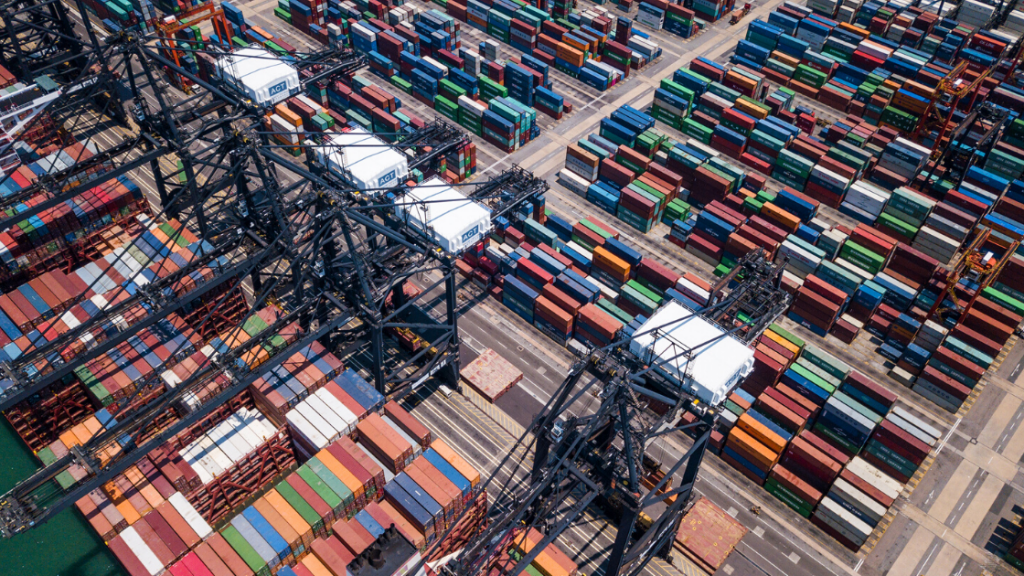Editor’s note: This is a good article getting at the fundamental causes of trade imbalances. China’s – and other countries’ – consumption suppression means they will export their overproduction and their unemployment. Trade officials are not doing their job if they don’t understand this.
By suppressing consumption, China imposes a production glut on the world, to the detriment of its own workers and trading partners
[Greg Ip | July 8, 2020 | WSJ]
President Trump’s trade war with China is meeting at least one of his goals. The U.S. trade deficit with China in the past 12 months has dropped to its lowest since 2012.
Unfortunately, that narrowing has come from the U.S. buying less from China, rather than China buying more from the U.S. Slack Chinese imports are a symptom of the underlying reason China’s trade surpluses, not just with the U.S. but the world, persist: China consumes too little and saves too much.
True, China’s overall surpluses have shrunk sharply as a share of its gross domestic product in the past decade. But because GDP has grown so much, the surpluses, especially for manufactured goods, remain enormous. Consumption is still under 40% of Chinese GDP, one of the lowest ratios among major economies. The persistence of those imbalances is why trade conflicts aren’t about to go away even if Mr. Trump is no longer president.
The consequences of global trade surpluses and deficits are the subject of “Trade Wars are Class Wars: How Rising Inequality Distorts the Global Economy and Threatens International Peace.” The authors are Matthew Klein, economics commentator at Barron’s, a sister publication of The Wall Street Journal, and Michael Pettis, an economist who teaches at Peking University’s Guanghua School of Management.
Messrs. Klein and Pettis shed new light on an old issue by showing how global savings imbalances result from the growth model used by China, and now Germany. That model systematically suppresses the wages and consumption of ordinary workers to generate high savings that can be invested in new industries, or abroad. “The high savings model forces ordinary people to spend less so that the government and business elites can spend more,” they explain.
China, the authors note, is only one of many countries to go this route. During the industrial revolution, British industrialists’ wealth and savings were padded by the cheap labor of urban workers forced off farms when land holdings were consolidated. In the American antebellum south, slaveholders expropriated the returns to enslaved people’s labor to produce the cotton that generated the lion’s share of U.S. exports. In the 1920s and 1930s, the Soviet Union used forced labor and collectivized agriculture to export grains and minerals in exchange for machinery.
Like South Korea and Japan before it, China grew rapidly by channeling its people’s savings into high-return investments in education, public infrastructure and export-oriented industries. It did so through an undervalued exchange rate and a financial system that subsidized industrial borrowers by paying savers next to nothing. Both have been reformed, but Messrs. Klein and Pettis note that many features of China’s economy still discriminate against workers and consumers: adversarial unions are illegal, taxes on labor and consumption are high, and millions of migrant workers are deprived of social benefits for lack of residential permits.
By definition, surpluses in one country must equal deficits in another, so the trade surpluses generated by China and Germany force the U.S. (and other low-saving countries such as the U.K.) to run deficits. Trade deficits don’t necessarily reduce employment, but they change its composition. In the 2000s, Chinese imports wiped out millions of U.S. jobs while Chinese savings helped inflate the housing bubble. In that sense, Messrs. Klein and Pettis write, inequality in China contributed to inequality in the U.S.
“The U.S. financial system and consumer market function as a safety valve for exploitation elsewhere,” the authors write. “Unless policies in the rest of the world change, the U.S. cannot unilaterally reduce inequality, raise living standards, and stabilize or reduce its current account deficit.”
Though the worst of the China shock had dissipated by 2016, its legacy helped send Mr. Trump to the White House on an anti-free trade platform.
China may have hoped its “phase one” trade deal with Mr. Trump and narrowing surpluses would damp protectionism. It has, for years, promised to reform its economy to be more pro-consumer. Coincidentally, in the first quarter its current account, which includes trade in goods and services and investment income, flipped from surplus to deficit as the coronavirus hampered exports.
But events are now going in the wrong direction. Through May, Chinese purchases of U.S. goods are running at just half its commitment, according to Chad Bown of the Peterson Institute for International Economics.
Spending by Chinese tourists abroad, which had offset some of the goods trade surplus, has been shut down by the pandemic. Its manufacturing has recovered faster than retail sales, suggesting surpluses are about to re-emerge. Yet the world is in no mood to absorb China’s production glut: demand is depressed everywhere. These are the ingredients of a global fight for market share fueled by protectionism and currency devaluation.
In the U.S., anti-China sentiment in both parties has been whetted by China’s alleged role in the coronavirus, pursuit of technological dominance, geostrategic bullying and crackdown on domestic dissent, including in Hong Kong. Senators from both parties have taken aim at global imbalances by proposing a tax on foreign purchases of U.S. stocks and bonds, intervention in currency markets to weaken the dollar, and even repudiation of some Treasury debt held by China. If presumptive Democratic presidential nominee Joe Biden defeats Mr. Trump this fall, it will be as the head of a Democratic Party more comfortable with interventionism and less attached to free trade.
China has long sought to tamp down trade frictions by making its economic model more consumer friendly. It may find those efforts are too little, too late.
Read the original article here.













